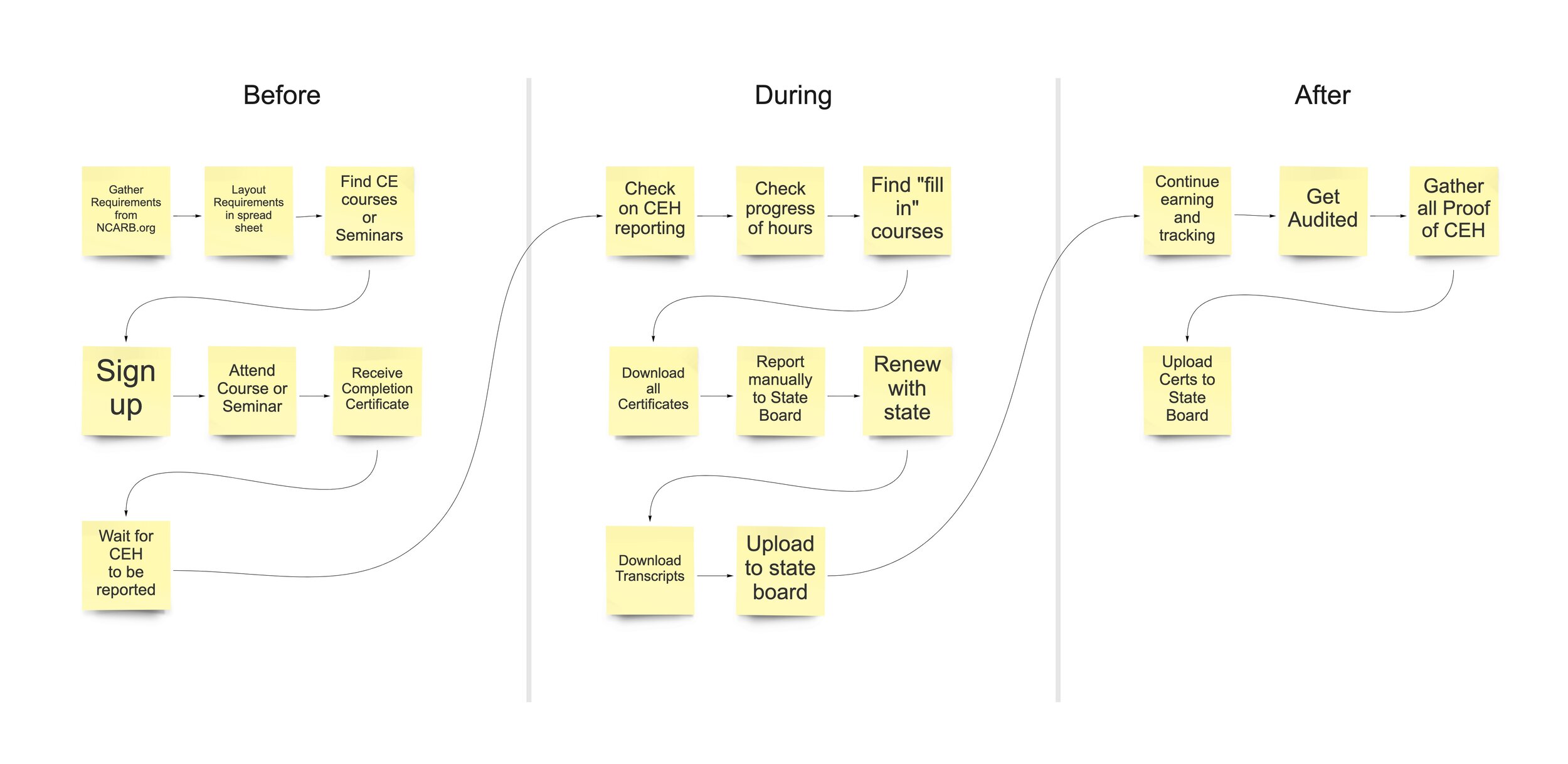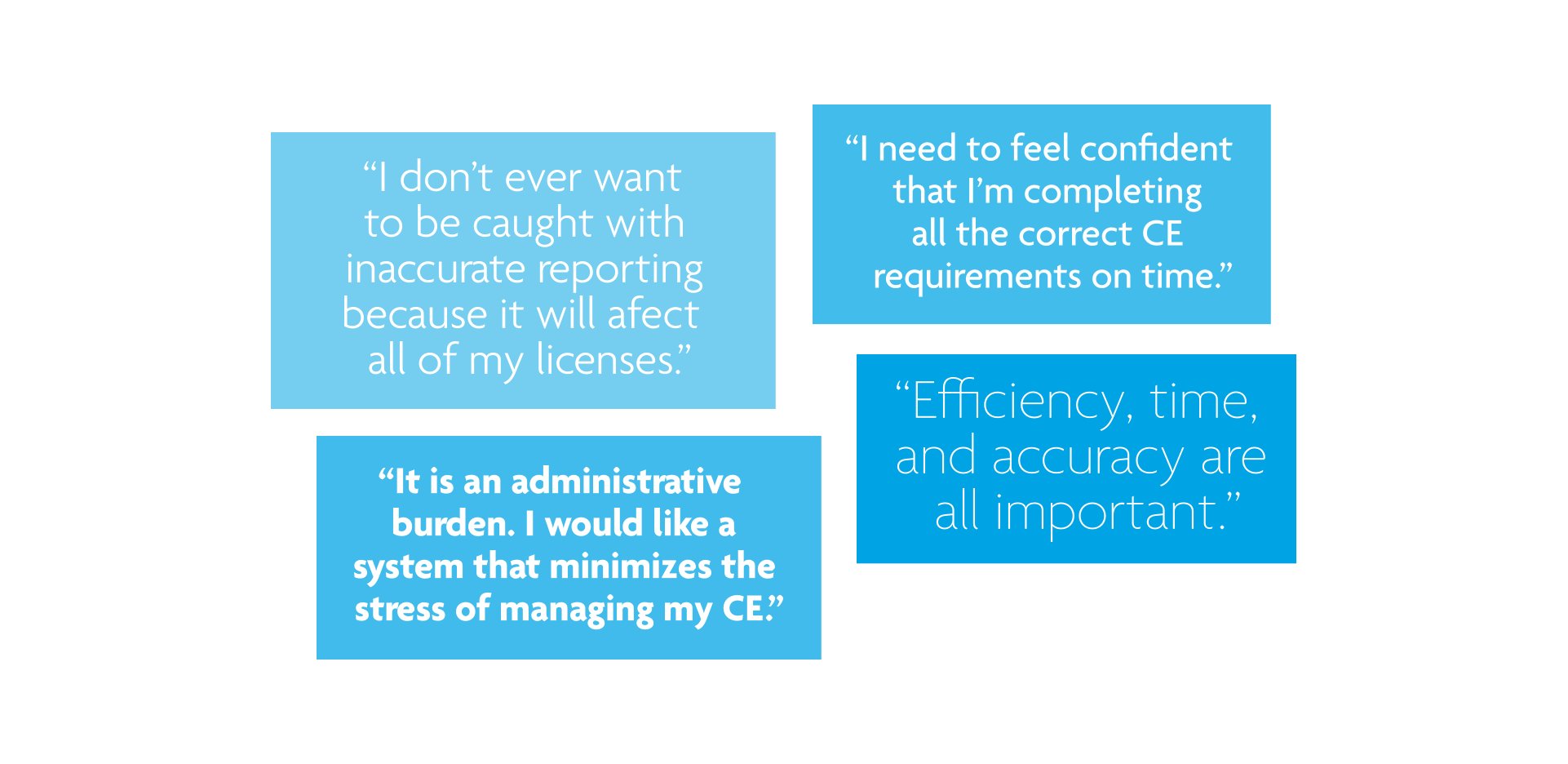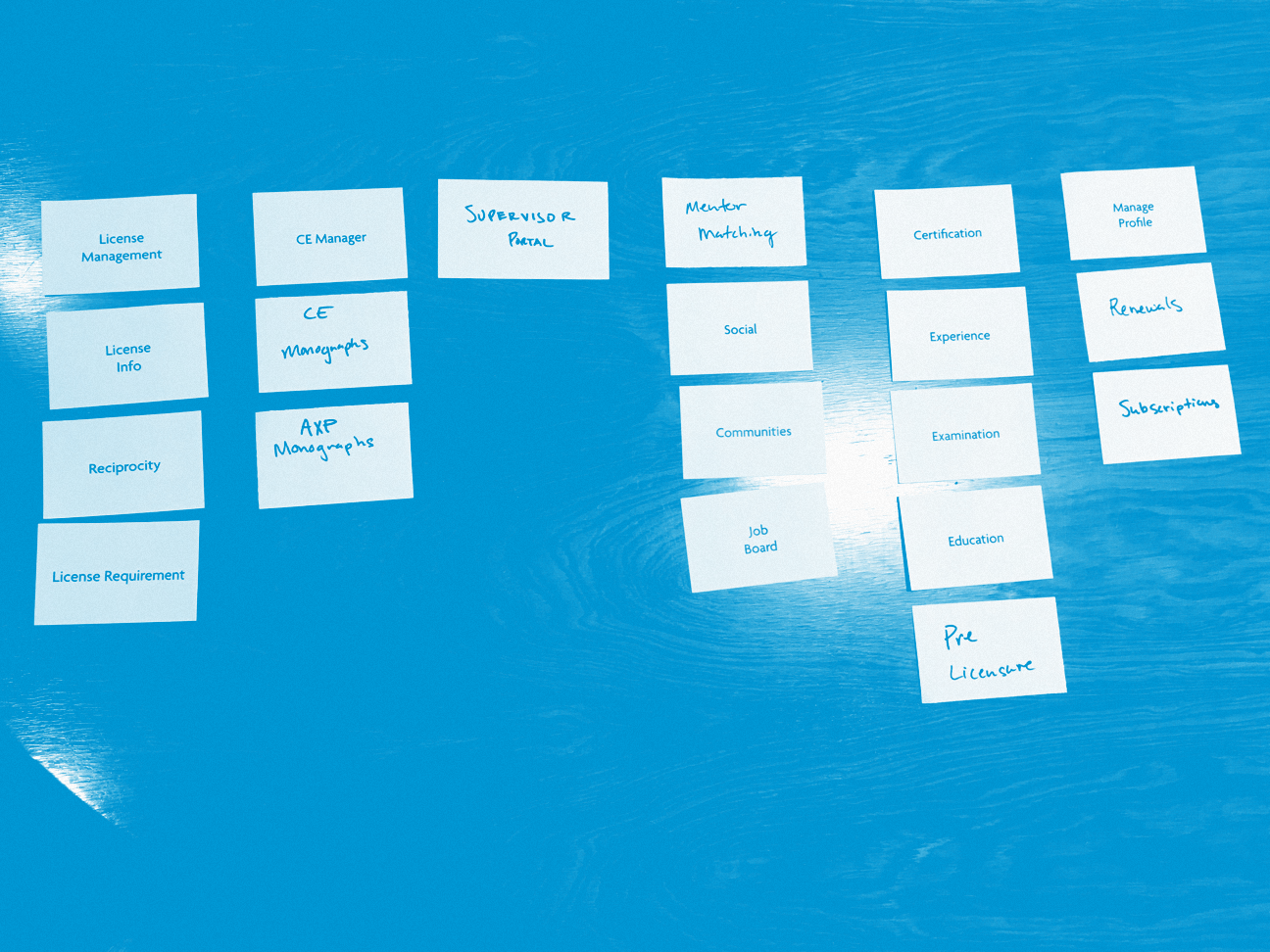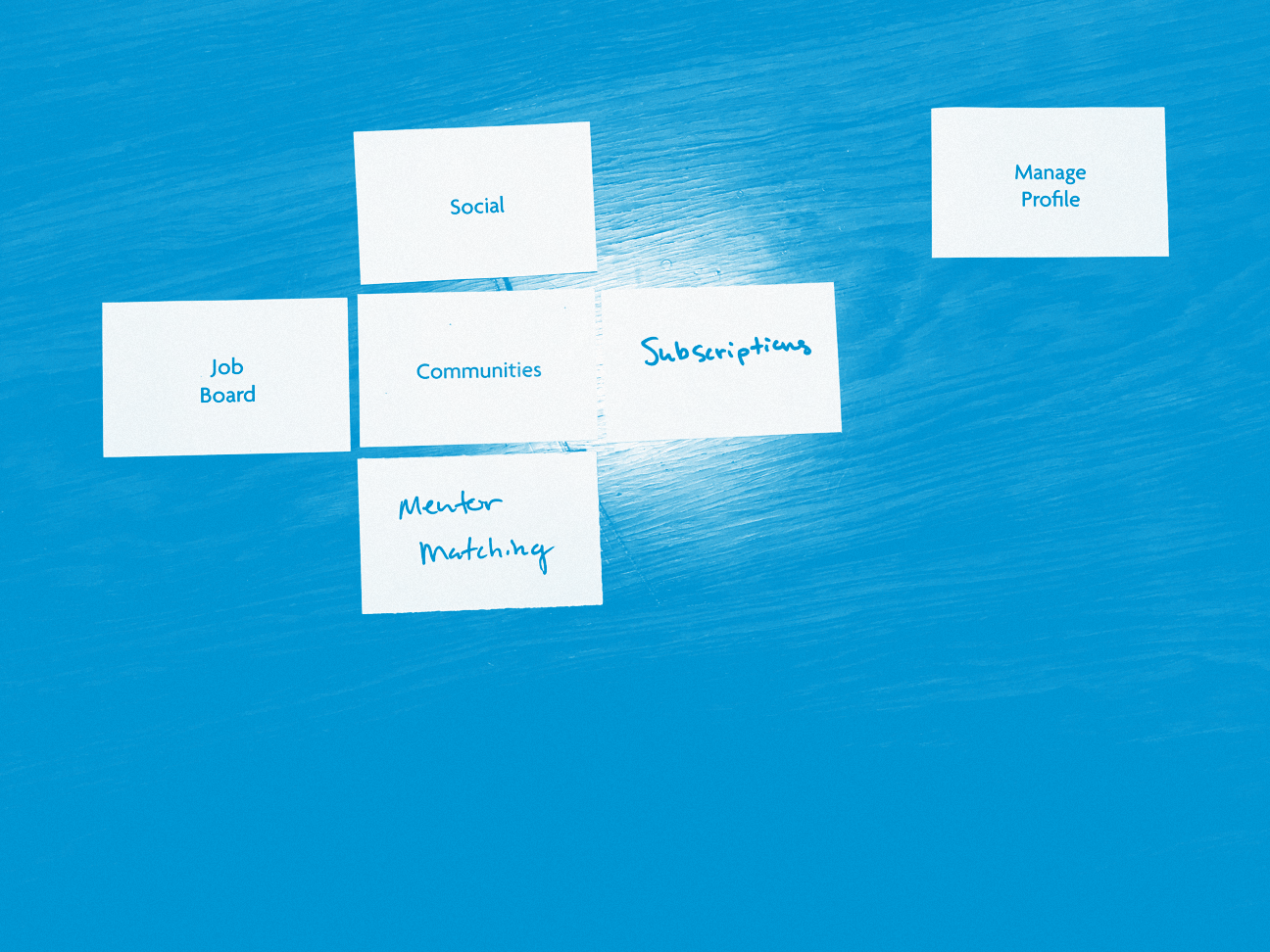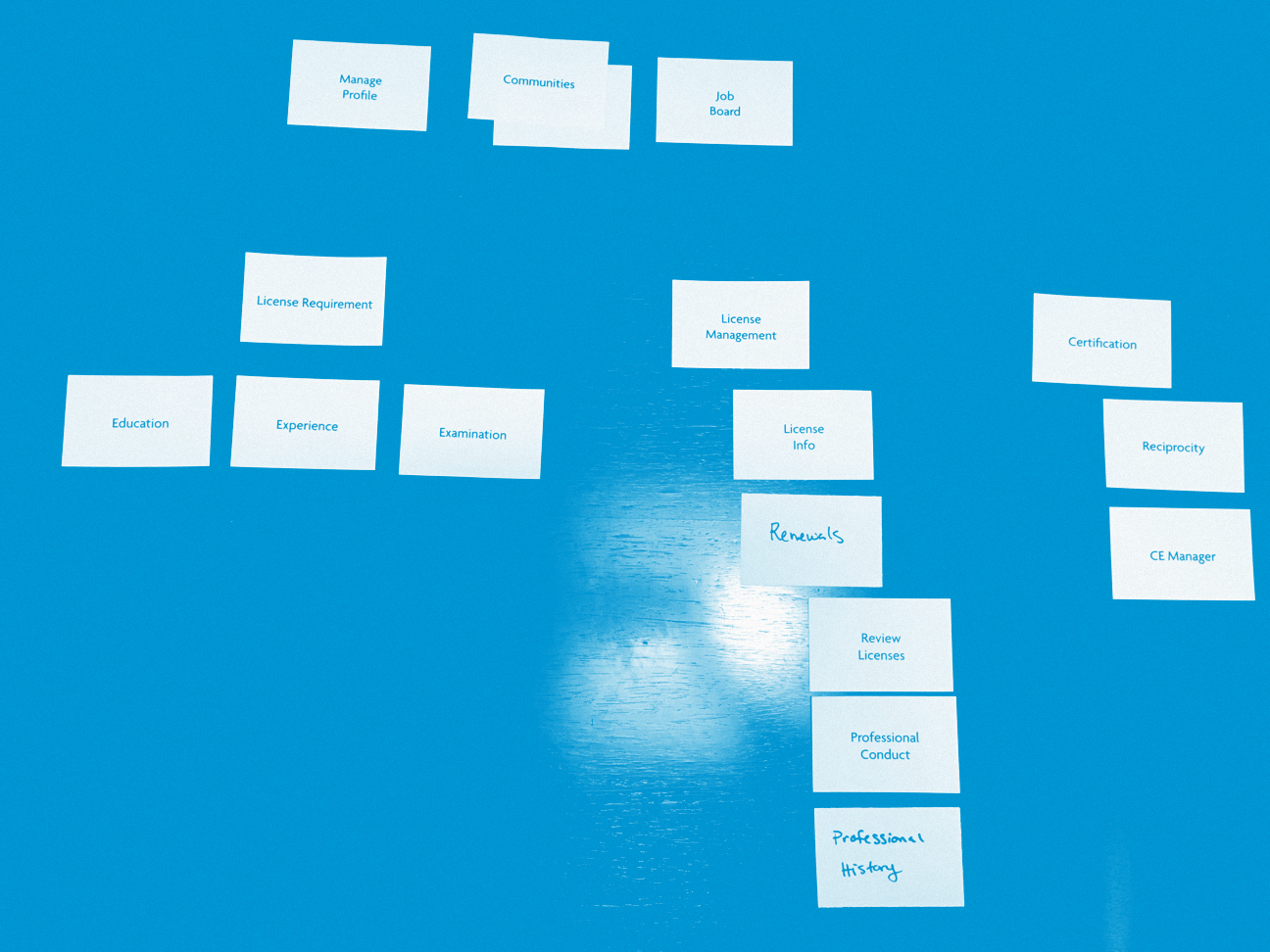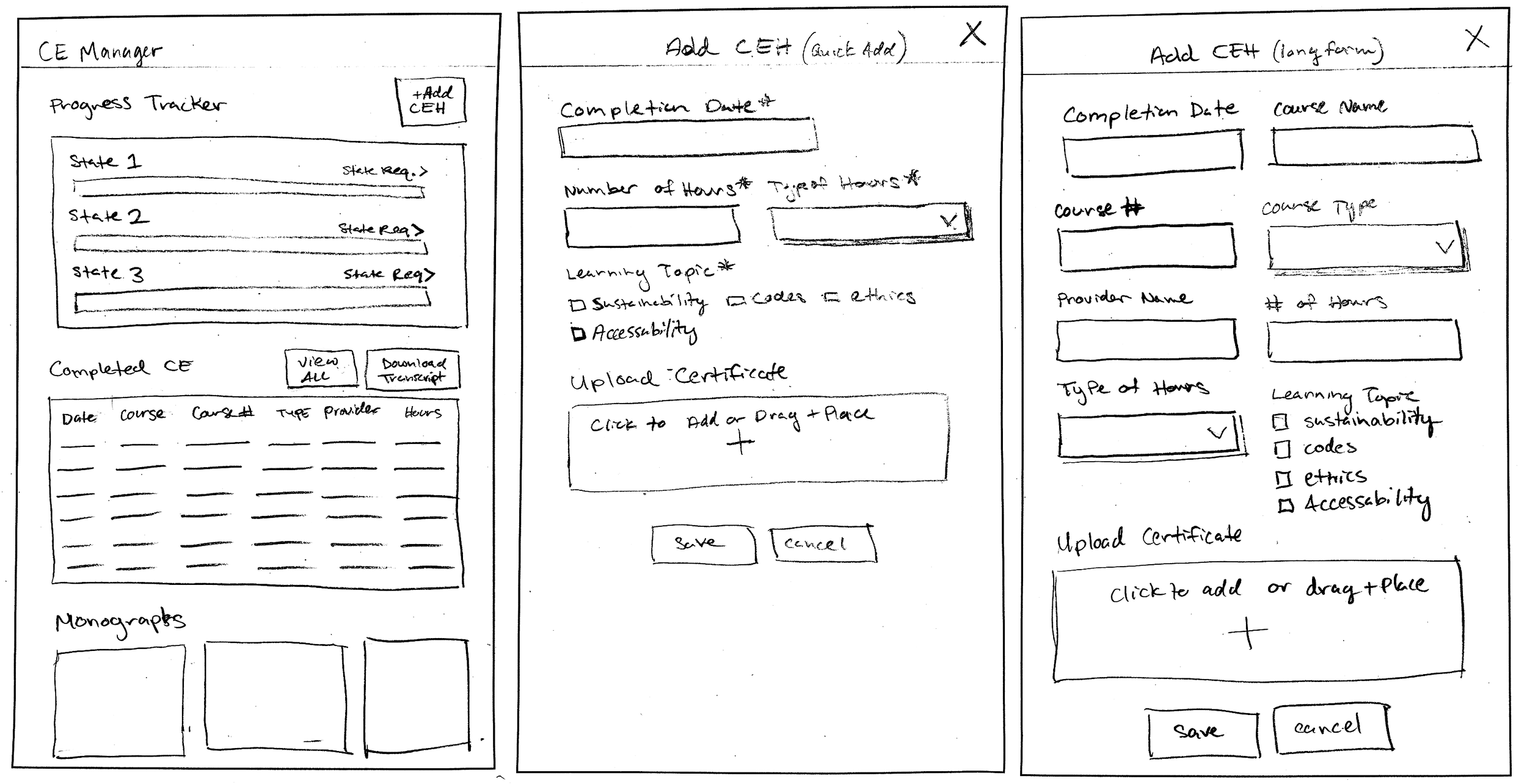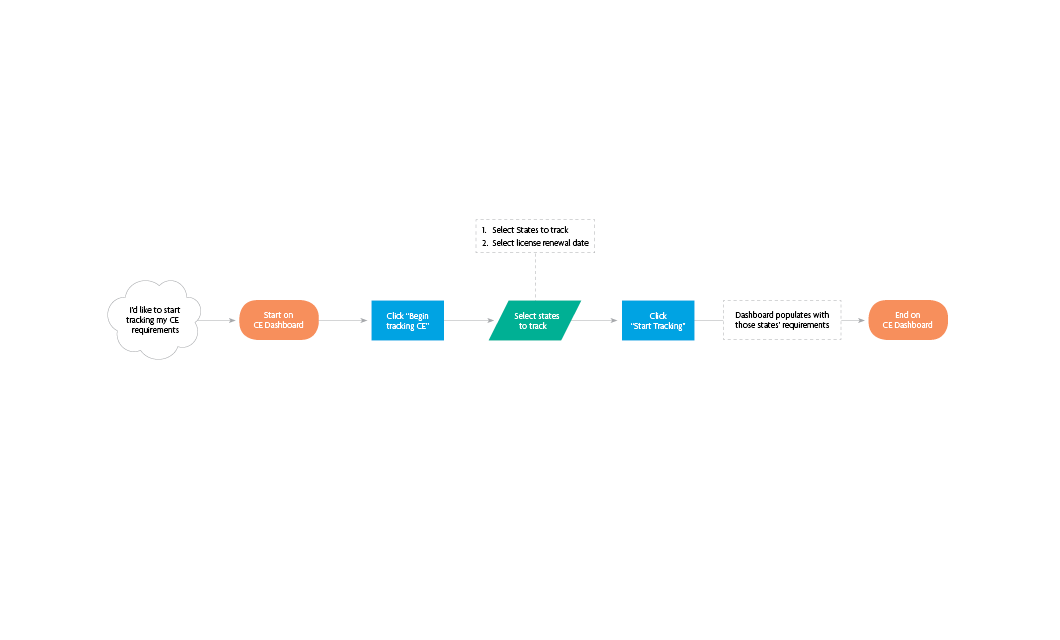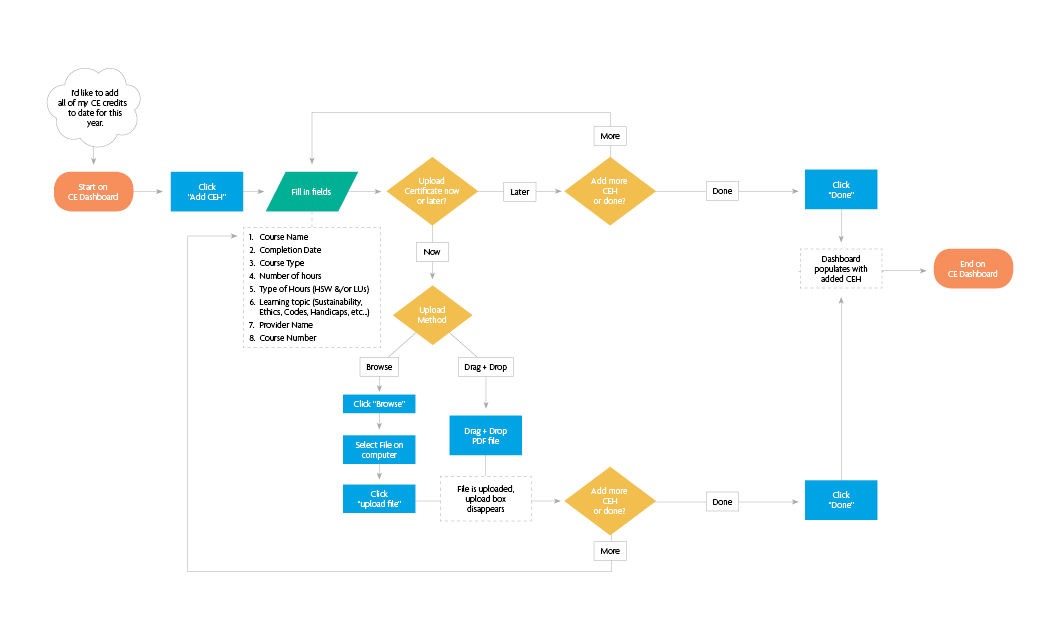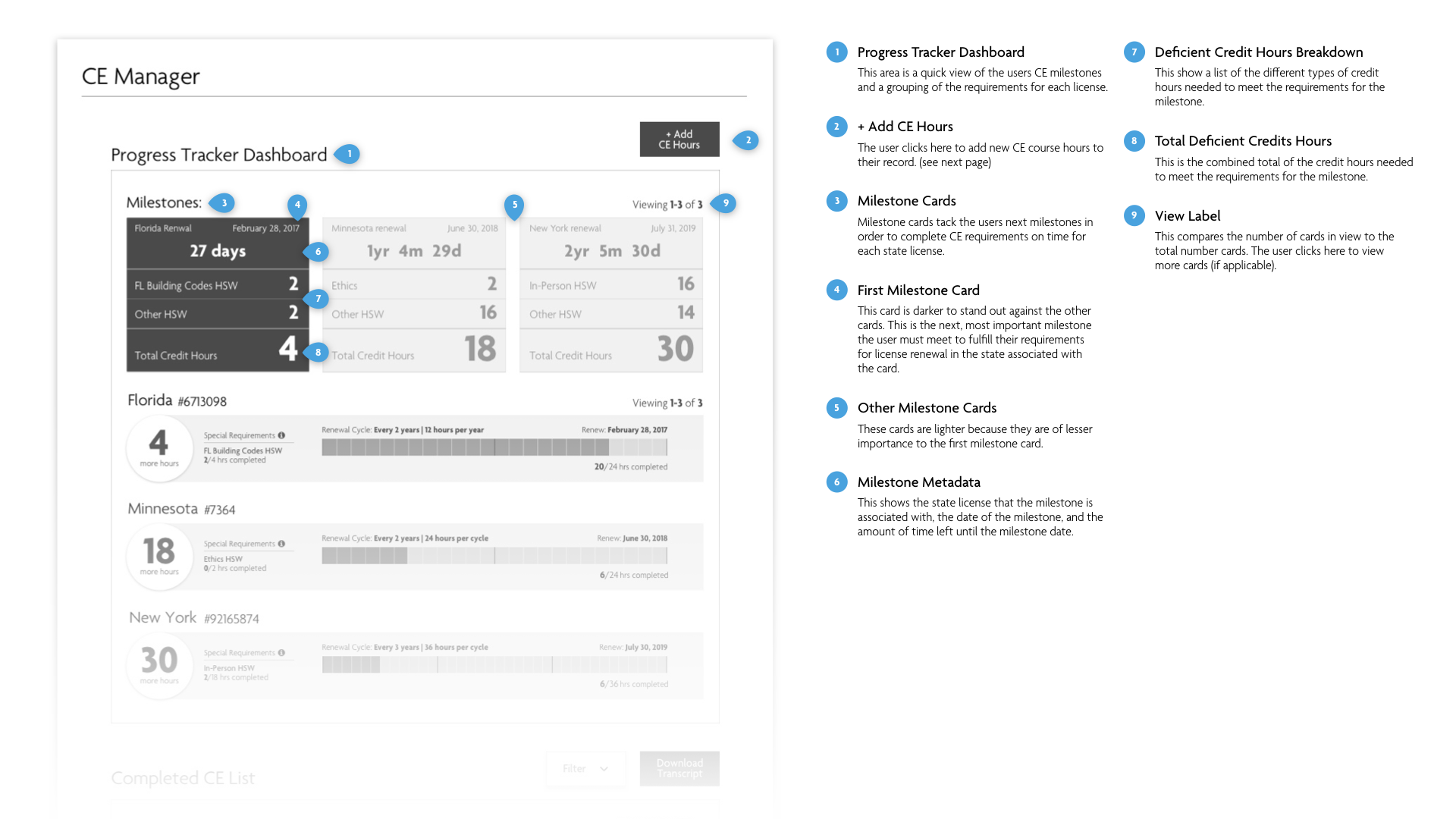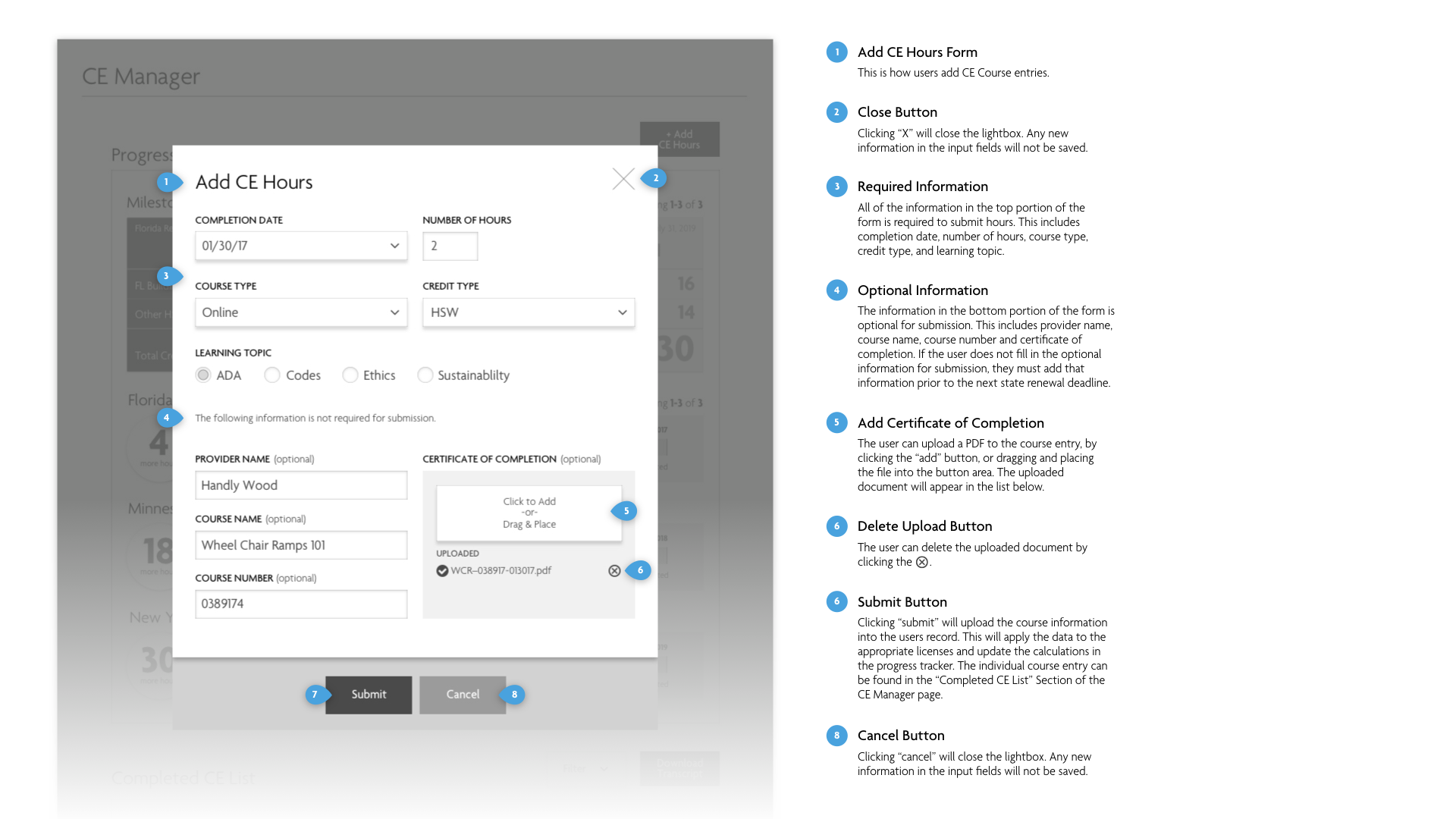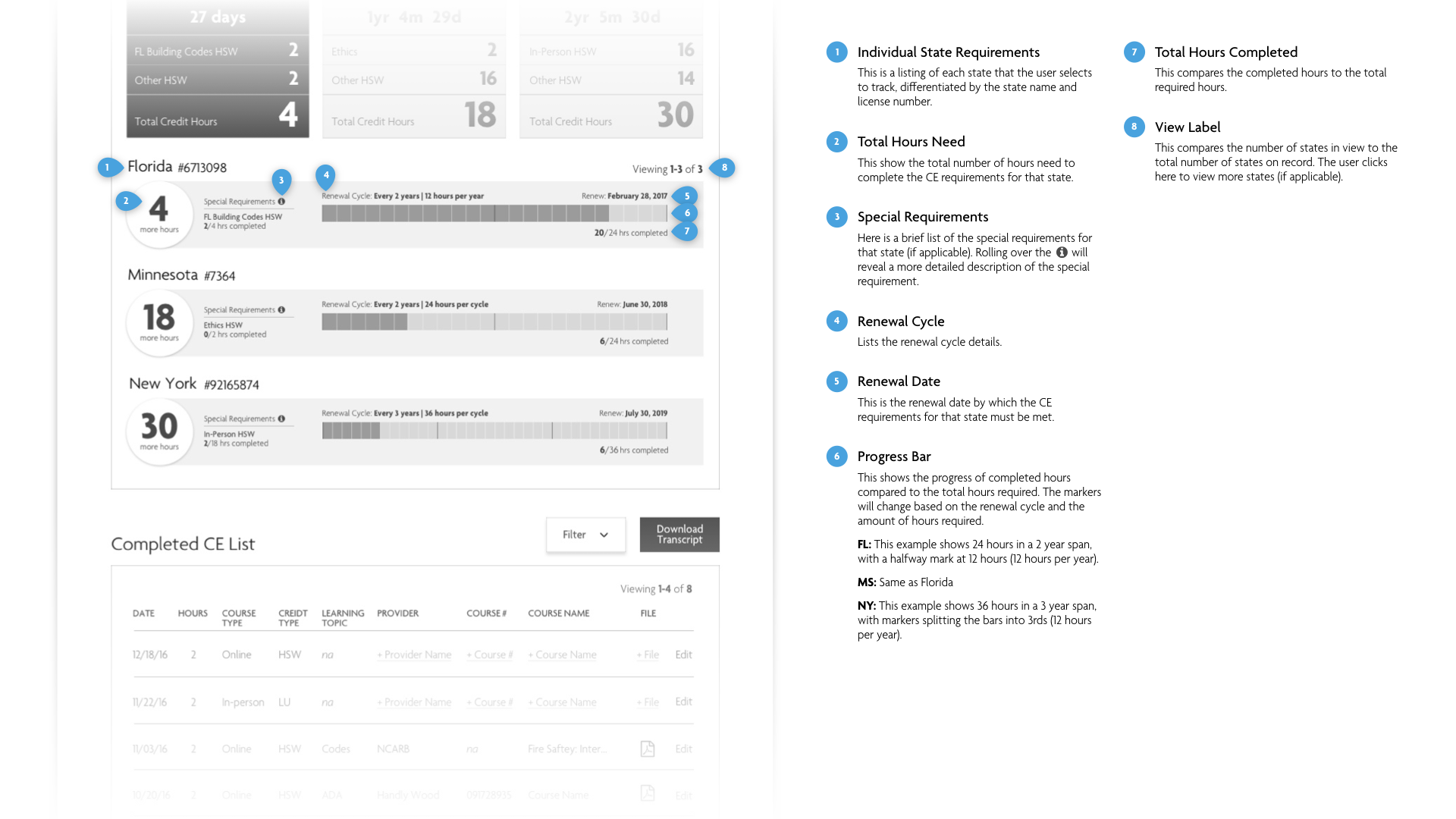Drew Ransom
Senior UX / Product Designer
Architect Continuing Education Reporting Tool
User Experience Research & Design
UX Designer / NCARB
Overview
It has long been NCARB’s goal to offer a tool that helps architects manage their continuing education (CE). With competing priorities and a constriction on resources, stakeholders wanted to understand, end-to-end, the complexity of designing a tool to meet the customers needs. To help them decide whether to build in-house, or identify a third party solution, I was put to the task of discovering our customers needs and present my findings to executive leadership and senior management. My research and designs would be used to inform a strategic plan that would later be presented to the Board of Directors.
Business Goals
Offer a modern technical solution to help architects manage CE credits and determine whether an internal build or an external partnership is the best strategic next step.
NCARB Chief Executive Officer, Chief Innovation & Information Officer, Chief Operating Officer, President of Experience & Education, Board of Directors
Key Stakeholders
Background
Architects in the United States often acquire licenses in multiple jurisdictions as it is common to practice across state lines. To maintain those licenses, architects must fulfill CE requirements each year.
Each of the 54 jurisdictions has unique CE requirements, while other architectural professional associations like AIA and USGBC also have separate CE requirements for membership. Tracking CE hours becomes particularly complicated when an architect holds licenses in multiple jurisdictions.
Challenges
CE Auditing
Upon renewing a license, an architect is subject to a random audit where they may be required to submit evidence that they've completed all CE requirements.
Renewal Cycles
Each state renews at different points in a calendar year, which adds significant administrative complexity and makes it even more difficult to track requirements.
CE Requirements
Requirements vary based on jurisdiction and architects must submit CE hours separately to each jurisdiction and professional association as there is no data sharing between entities.
Manual Processes
Because an architect must submit similar information multiples times in non-uniform format, human error and missed deadlines are more common and occur at an increased rate.
Current Solutions
Excel is the most commonly used tool for tracking multiple jurisdictional requirements which provides no assistance in easily understanding overlap and shared CE requirements.
Architects want to holistically understand & manage CE requirements for multiple state licenses in a single, easy-to-use interface.
The CE Landscape
Competitive Analysis
Research shows that AIA, LEED and other CE course providers are already using online platforms to track hours. Among these online solutions, architects found some of the features helpful such as:
Automatic reporting
Visual progress trackers
Lists of completed courses
Downloadable transcripts of completed courses
Search and filters
Email notifications
Course suggestions and other course offerings
The Mind of an Architect
User Research & Insights
Interviews and observations revealed significant overarching patterns in the architects’ processes. I analyzed the findings and summarized key pain points and user goals:
Pain Points
no way to see how credits apply to multiple state requirements
AIA transcript is the only officially accepted output of completed CE requirements
must be an AIA member to have an official transcript
disconnect between State / AIA / LEED requirements
some providers aren’t quick to report
credits get lost
manual processes are outdated
Goals
a streamlined process for CE reporting
an alternative to the AIA official transcript
less administrative burden
a holistic understanding of multiple state requirements and how requirements overlap
flexibility in reporting hours
email reminders
a digital solution that uses the latest technologies
Getting to Know Rick
Personas & The Power User
Upon interviewing and observing architects with varying experiences and needs, I quickly discovered that not all architects behave the same. Most architects only hold 1–3 licenses, so for them, tracking CE isn’t so difficult. I discovered that the threshold for number of licenses that made tracking CE particularly difficult was 4 or more. Those architects became the power user category—the type of users who are in serious need of a better solution.
For architects who have multiple licenses, their greatest fear is being caught with inaccurate reporting or missing requirements. One bad strike on their report card could affect ALL of their licenses and their ability to practice.
Designing the MVP
Feature Prioritization
After analyzing the research and insights, I explored ideas for features that would help architects easily track their CE requirements. I compared those ideas with the key user goals to prioritize a list of features we could focus our resources on first.
Some of my decisions included:
Address the core needs first, such as selecting states to track, displaying jurisdictional requirements, and manual upload of completed courses.
Other non essential features like auto-reporting for CE vendors may be a high priority, but would take much more time and effort to achieve.
Mobile would come later, as observations revealed that a web first approach is more conducive to the users’ needs at this time.
Organizing the System
Information Architecture
To understand how best to build out the key features of the solution, I developed a card sorting exercise with the goal to learn how architects would expect the tool to be structured. I ran the exercise with 3 architects. Each organized the information slightly differently, although a few commonalities arose.
Architects:
want to see a breakdown CE requirements for multiple jurisdictions and where they overlap
prefer a visual to show progress (data visualization)
need the ability to manually upload CE course information
There is an opportunity to create a system which consolidates CE reporting for multiple jurisdictions into a single interface and manages multiple jurisdictional requirements on behalf of the user.
An ideal solution will simplify administrative duties, cognitive overhead, and allow peace-of-mind for architects as they focus on protecting the public.
Exploring the Solution
Sketching & User Flows
I began sketching ideas for how the components of each feature might be organized on screen based on the architects’ categorizations of the information. To support the sketches, I developed user flows to describe the interactions on screen. Low-fi prototyping allowed for a quick feedback loop with the architects, which validated whether the features I was proposing would address their core needs.
Defining the Solution
Wireframing & Annotation
Once my initial designs were validated, I chose to create a wireframe of the key features with annotated functionality and interactions. I presented the wireframes to the architects, and they provided valuable feedback which I used to iterate on the design. This was also useful when presenting the value of the features I had chosen to create to key stakeholders.
Bringing it to Life
Prototyping—Presenting to Stakeholders
After multiple iterations on key features I was ready to bring the screens to life in a clickable prototype. I designed interactions based on a few use cases that would demonstrate how key features would function and ultimately serve the customer. When presenting to stakeholders, I demonstrated the complexity of the problem and how the solution could look and function. The presentation sparked important conversations around business goals, serving our customers, and the best approach to getting a working solution out in a timely fashion.
The Outcome
The insights and recommendations I presented influenced the strategic direction that key stakeholders would ultimately present to the Board of Directors. Based on my research and findings, an explanation of the essential user needs, and demonstration of product functionality, leadership decided that building a custom solution would require time and internal resources that the organization wanted to focus on other priorities. Management chose to seek-out existing software that would offer most of what I had presented as key features for the product. A partnership is now underway to deliver a solution as an extension of the services NCARB provides for architects and state boards.


